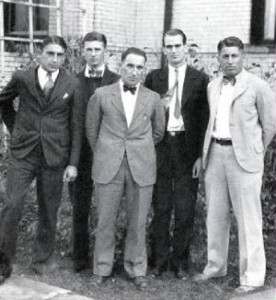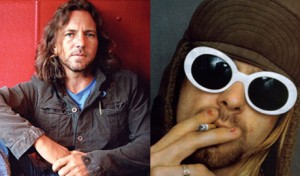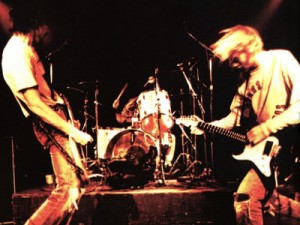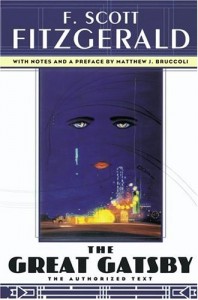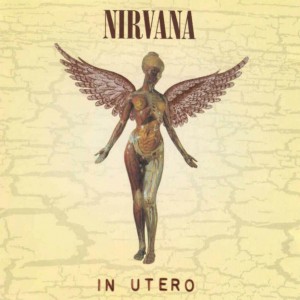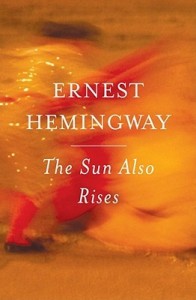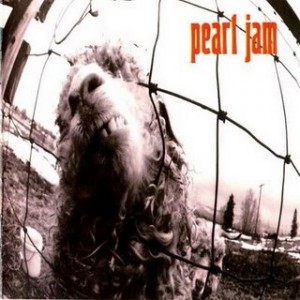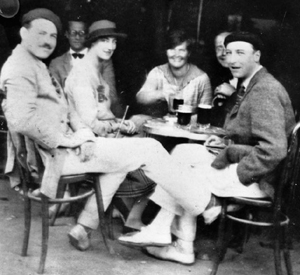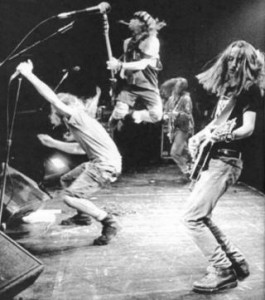“You are all part of a Lost Generation” – Gertrude Stein to Ernest Hemingway
“Teenage angst has paid off well,
Now I’m bored and old.
Self-appointed judges judge
More than they have sold”– Serve the Servants, – K. Cobain
Note: This article is best read while listening to Loud Music.
The idea of a generation of young people living and breathing and sharing the same cultural experience is not a new thing. It’s only in the 20th Century that Americans have, in an effervescent need to create a label for anything and everything under the sun, labeled themselves as belonging to part of a generation in an effort to unite and identify their own personal experience so as to make sense of the whole thing. Or something like that.
I was at work when an argument broke out amongst my co-workers and I about who exactly constituted the population of Generation X. You know, the “Fight Club” reading, flannel wearing, grunge blasting predecessors to Generation Y, the Millenials, the iGeneration (my kind of people, in other words). My immediate response was to typify Gen X by attaching their cultural signifier in an effort to give the best picture of what it was like to grow up in the late 80’s/early 90’s by shouting out “Oh, they’re the Nirvana generation.” In an effort to be official about the whole thing, a Wikipedia search revealed that Gen X’ers (Appropriate phrasing? Considering it’s an invented concept, who cares?) were born sometime between 1967 and 1979. Roughly, mind you. Which means that the earliest outliers would have been 27 when Kurt Cobain, the voice of the Generation, took his own life in 1994. (Same age as Cobain? Coincidence? I think not!)
Of course, signifying a generation with a cultural event, figure, or icon is nothing new. The Baby Boomers had the Beatles, Woodstock, and the Vietnam War. The Greatest Generation had World War II, Gone with the Wind, and the impetus to get cracking on making the Baby Boomers. And of course, the Lost Generation had World War I.
Labeled by Gertrude Stein in a conversation with famed writer Ernest Hemingway, the Lost Generation is typically signified as being American youths who had served in the World War I and were subsequently scarred by its various horrors. A multitude of artists, writers, and public figures arose from the aftermath of the Great War, including Hemingway and F. Scott Fitzgerald.
A casual glance at both the Lost Generation and Generation X reveals several similarities. Both feature despondent young men rebelling against cultural norms. Both generations are typified by strong disillusionment with their surroundings. Several of the icons of both generations exhibited violent, self-destructive behavior (Hemingway and Cobain being two of the most prominent suicides that are brought to mind). Even their art bears several striking similarities, and by examining several representative artifacts from each generation, it is possible to see how their shared story is communicated through similar mediums though worlds apart in form and content. By doing so, it is also possible to see that, while nothing in the postmodern world may be a new idea, similar themes of discontent and unrest echo through the ages.
To sum up: the shit from the New Boss (to quote the Who) looks the same as the shit from the Old Boss. (Forgive me, Pete Townsend)
To properly break this down, my goal is to take two works from the Lost Generation by its signature writers, Hemingway’s The Sun Also Rises and Fitzgerald’s The Great Gatsby, and put them up against two of the seminal works from Generation X, in this case the rock albums In Utero by Nirvana and Vs. by Pearl Jam. (Not Ten. Why? Because I like Vs. better. As for why not Nevermind? We’ll get to that.)
So. Let’s get started.
Gatsby and In Utero
As discussed by my colleague in his recent opinion piece, Fitzgerald’s use of symbolism and overwhelming emotion is most strongly exemplified in his novel The Great Gatsby. A staple of high school English classes (that I somehow avoided until about two weeks ago), the novel has stood the test of time, becoming part of the canon of Great American Novels.
One strongly feels, however, that In Utero will not be part of your typical high school English discussions. Which is a shame, because it’s a damn good album.
While working on In Utero, Kurt Cobain was in the midst of a downward spiral of addiction, depression, and the perils of becoming both an overnight success and the appointed voice of his generation. For a kid from small town Aberdeen, Washington, success proved too much to bear. Especially with all that he had going on in his life. (For more insight, please read Charles Cross’ fantastic biography Heavier than Heaven. Seriously, go read it. Truly wonderful stuff.) Nevermind was the breakthrough, featuring the hit single “Smells Like Teen Spirit”, among other fantastic songs such as “Polly”, “Something in the Way”, “Lithium”, and “In Bloom”. With In Utero, however, Cobain stepped up his game.
Both Gatsby and In Utero feature two of the best writers of their times working at the peak of their experience and power. Fitzgerald’s novel uses symbolism to showcase the grand romantic gesture of working to obtain that green light at the end of the dock. (Fill in whatever you want for your own green light, but it’s something we can all identify with. As a result, the story ages particularly well.) Gatsby’s personal quest for reunification with Daisy becomes an obsessive drive that destroys him (directly and indirectly), in his world of fast cars, wild parties, and unfathomable piles of money. Knowing of Fitzgerald’s personal life, it is also possible to see a small hint of his own relationship with his wife Zelda in the lust between the main characters. (Remember that the novel is dedicated “To Zelda”) Such potent feelings and imagery decidedly speak to a universal audience
Meanwhile, Cobain’s In Utero shows the musician finally at the peak of his songwriting power. It is in this album, not Nevermind, that Cobain wrangles his inner demons into three minute exercises in pop simplicity.
And how does he do it? Through fucking symbolism, that’s how.
Let’s examine “Heart Shaped Box”, one of the most recognizable songs from the album. Charles Cross describes the song as a songwriting “triumph” by Cobain. In it, he combines his passionate love for his wife Courtney Love with the symbolism of song-writing. (There actually was a heart-shaped box that she gave to him as a present. However, its mention in the song is far more symbolic (and ambiguous) than the actual box in question.) Much like Fitzgerald’s love for Zelda, Cobain’s lust for Love is stamped all over the song. He bleeds out his emotions for her in a way that moves beyond the screeching heard on songs like “Breed” or “Territorial Pissings” from his previous album.
The same symbolism can be found on songs such as “Pennyroyal Tea”, where his focus shifts from love for Courtney to a cheap off-brand of tea (used and abused in a fashion similar to the way Cobain used and abused a cheap off-brand of deodorant, turning it into the anthem of the ‘90’s) that becomes a metaphor for draining Cobain’s essence through mass consumption of his songs and records. Other songs, such as “Serve the Servants”, show an autobiographical rage directed at the father that he felt abandoned him as a young child. “All Apologies”, long disputed (wrongly) to be the ‘suicide note’, shows a quieter acceptance of fate, as Cobain mourns what he is, what he wants to be, and what he cannot be.
Both Fitzgerald and Cobain are particularly skilled at wrapping up their own lives and passions into expressive works that tend to leave their reader/listener drained at the end. The use of symbolism makes it entirely relatable to multiple generations, while still rooted in the core experiences that made up their generation.
Meanwhile…
The Sun Also Rise and Vs.
The easy way to go about making comparisons from Generation X to the Lost Generation is to say that both Cobain and Hemingway killed themselves. This is also a cheap way to milk an essay from nothing. In addition, it’s also misguided. Lots of people have killed themselves. Many artists have killed themselves. Sure, they had similar mental issues and artistic goals. That alone does not make for comparisons. Plus, it’s just not interesting.
With that in spirit, let’s examine The Sun Also Rises, one of Hemingway’s many great works, with Vs., the follow up to Pearl Jam’s smash hit record Ten.
Hemingway has multiple books that one might claim as his masterpiece. A Farewell to Arms, The Old Man and the Sea, and For Whom the Bell Tolls immediately come to mind. His career is one that spans decades, continents, and interests, closely following his life in a semi-autobiographical state of being. The Sun Also Rises follows that pattern, written about a trip to Pamplona that he took with friends while living in self-imposed exile in Paris. The same might be said about the well-traveled band Pearl Jam. Following their release of Ten, Vs. was the second of three fantastic albums by the band (followed up by Vitalogy) that showcased the blend of classic rock guitar jams, heavy grunge distortion, and vocalist Eddie Vedder’s agonized howl that sounds like a wounded animal turning on its attackers. The band, still together and touring after twenty years, has gone on to a long and successful career.
Now, where do the comparisons start, you ask?
It’s all in the style.
Ernest Hemingway, with The Sun Also Rises, began developing a style of writing that has been called the Iceberg Theory of writing. Essentially, the idea is to use a spare, minimalist style to suggest a deeper level of meaning submerged within the lines of text. In The Sun Also Rises, this is used to showcase not only the angst and war weariness of the main protagonist Jake Barnes, but also his vitality and resoluteness in the face of the aftermath of the Great War. His style also lends itself towards a spare state of emotion, keeping it at arms length while turning over and running on and developing a sense of continuation and honing its masculine feelings and desires and never truly expressing what it’s trying to say and…(get the picture?)
With several songs on Vs. (and throughout Pearl Jam’s catalog), this same sense of distance can be observed. Take, for example, the song “Daughter”. In it, we hear about a young girl who cannot connect with her mother. This could be for any number of reasons, whether it be the generational gap, abusive parents, lack of interest, etc. However, a closer listening shows that the young girl has a learning disability, leading to the lack of love from her parents. This doesn’t symbolize anything beyond the tortured relationship between parents and their children, something that Vedder highlights repeatedly in other songs; in this instance, the listener is meant to draw that connection on their own. There are no ‘Heart Shaped Boxes’ to be found in Pearl Jam’s lyrics. Songs like “W.M.A.” and “Go” are filled with subtext that can only be discovered by the listener filling in the gaps. Meanwhile, songs such as “Elderly Woman Behind a Counter in a Small Town” tell stories about…well, an elderly woman behind a counter in a small town. What lies beneath that, however, is the ache and the agony that come with being trapped in one place for your whole life. We relate to the message, not to the symbols.
The emotions of the music are more present than in Hemingway’s, to be sure, but at the same time, Hemingway’s words bristle with emotion in their own particular way. The final passage of The Sun Also Rises deals with Jake’s confirmation that he will never have the relationship with Brett that he’d always want. While it’s a nice fantasy to long for, it will never come true because of who they are. Meanwhile, she is still enraptured in her own life and problems, unable to see his agonizing over her. On the grander scale, this reflects Hemingway’s affair with a real life married woman from his travels in Spain, showcasing his own particular form of angst over what has been and what can never be.
I’m sure that, had he been around, Ernest Hemingway would have been a Pearl Jam fan.
All in All is All We Are
It’s unfortunate that the study of English literature leaves little recognition for the development of song writing over the last hundred years or so. The sheer volume of poetry that comes out of writers such as Kurt Cobain and Eddie Vedder, and hundreds of other writers deserves to be examined, analyzed, and discussed by students in much the same way that Fitzgerald and Hemingway are discussed. Both speak to their respective generation’s experiences in deep and profound ways that further help to illuminate the period in which they were gestated. In addition, they all transcend their respective periods in becoming something better.
Comparisons and contrasts between Gatsby and In Utero and The Sun Also Rises and Vs. are many, and it could be argued that they have nothing to do with each other, rendering this entire discussion moot. However, the feeling of what it meant to belong to the Lost Generation and to Generation X is forever transcribed and recorded in the words and rhythms of these respective works, something that doesn’t require having been born between 1967 and 1979 or having fought in World War I to truly understand on a human level.
What it all boils down to, at the end of everything, is the same boiling principle that churns at the heart of every young, impassioned artist: the need to break their surroundings, to howl at the moon, and shatter everything that has come before. These works have stood the test of time, or will stand the test of time (These albums released in the early 90’s are nearly 20 years old. Think about that.) More importantly, their messages are just as fresh and vibrant as they ever were, waiting to be discovered by a whole host of young people all over again. They bleed understanding on a physical, mental, and spiritual level, changing and affecting deeply those who obtain them.
And isn’t that what great art is all about?

